Sustainable Development Goals
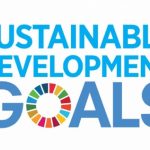
In September 2015, United Nations member states adopted the 2030 Agenda for Sustainable Development. The Agenda, to be achieved within 15 years, comprises 17 Sustainable Development Goals (SDGs) with 169 specific targets and 230 indicators for measurement.1 The SDGs stress the importance of balancing the ...
SDG 4 Quality education
SDG 4 – “Ensure inclusive and equitable quality education and promote lifelong learning opportunities for all” – is made up of a global monitoring framework of 10 targets and, starting in 2020, 12 indicators. Education is considered a fundamental human right55 and a core enabler ...
SDG 3 Good health and well-being

Sustainable Development Goal 3, “Ensure healthy lives and promote well-being for all at all ages”, consists of 13 targets with 26 indicators. The targets include maternal health (3.1) and child health (3.2), communicable (3.3) and non-communicable (3.4) diseases, substance abuse (3.5), road traffic accidents (3.6), ...
SDG 13 Climate action
The monitoring framework for SDG 13 – “Take urgent action to combat climate change and its impacts” – is made up of five targets and eight indicators. These will be used to monitor progress in combating climate change as part of the 2030 Agenda. The ...
SDG 5 Gender equality
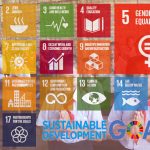
Sustainable Development Goal 5 (SDG5) focuses on gender equality and women’s empowerment, breaking down this topic into nine goals with 14 associated targets. These targets cover discrimination in workplaces and homes, property rights, education and a broad range of other topics related to gender. goals ...
Higher education

Higher education, in general, refers to education beyond the secondary level. Higher education institutions (HEIs) in Cambodia can be classified into three categories: The Royal Academy, university, and college. Cambodia’s higher education consists of an associate degree, four years of undergraduate education, two years of ...
SDG 5 Gender equality
SDG 5 – “Achieve gender equality and empower all women and girls” – has a monitoring framework of nine targets and 14 indicators. The goal encompasses discrimination (5.1), violence (5.2), harmful practices (5.3), unpaid work (5.4), leadership (5.5), and women’s and sexual health (5.6), as ...
SDG 6 Clean water and sanitation
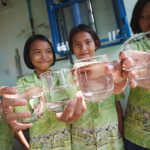
Sustainable Development Goal 6 aims to “ensure availability and Sustainable management of water and sanitation for all,” a goal which presents a significant challenge for any country to reach (with 40% of people globally impacted by water scarcity), including Thailand.372,373 Progress towards SDG 6 is ...
SDG 15 Life on land
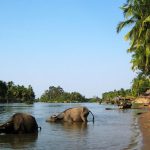
Sustainable Development Goal 15 – “Life on land” – is centered on the protection and restoration of land ecosystems. The goal specifically addresses forest management, desertification, land degradation and biodiversity. To this end, SDG 15 includes 12 targets, each with indicators for measuring progress. The ...
SDG 12 Responsible consumption and production

One of the key goals of the 2030 Agenda is to “decouple economic growth from resource use and environmental degradation”.478 Sustainable consumption and production involves promotion of resource and energy efficiency as well as reduction of economic, social and environmental costs. These are intended to ...
Poverty policy and regulation

As a fast-developing nation, Cambodia has always found poverty one of its main challenges. The Rectangular Strategy states that eradicating poverty has long been one of the Royal Government of Cambodia’s (RGC’s) highest priorities.507 Since the country’s first major post-civil war election in 1993, Cambodia ...
Science and technology
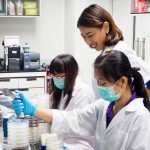
As the most developed countries in the region, Thailand and Vietnam lead the Lower Mekong in their adoption, accessibility and investment in science and technology. Thailand is also the only Lower Mekong country to rank on UNESCO’s Atlas of research and experimental development. While all ...
SDG 9 Industry, innovation and infrastructure

SDG 9 focuses on the development of sustainable and resilient infrastructure and industries, including small-scale enterprises. It encourages scientific research and the upgrade of the technological capabilities of industries. Access to information and communications technology and affordable Internet access are included. The goal has 5 ...
Water governance
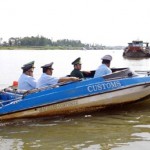
Because of the transborder nature of water ecosystems, a regional approach to water governance and the management of water resources is fundamental to both sustainable development and the assurance of water rights. Hydrobasins in the Lower Mekong. View the full map in Map Explorer.This need ...
Nationally Appropriate Mitigation Action
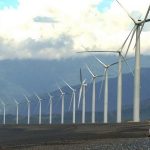
National Appropriate Mitigation Actions (NAMA) are voluntary, country-specific commitments to action that reduce emissions compared to ‘business as usual’ volumes.665 Recognizing that “economic and social development and poverty eradication are the first and overriding priorities of the developing country Parties,” the focus on NAMAs is ...
SDG 3 Good health and well-being

Sustainable Development Goal 3 (SDG 3) seeks to “ensure healthy lives and promote well-being for all at all ages”.672 The goal encompasses a wide range of mortality rates, infection numbers for many diseases, tobacco use, suicide rates, road deaths, and access to essential health services ...
Climate Change

In 2016, Thailand was ranked 20th globally in terms of carbon dioxide (CO2) emissions, producing 0.9% of global emissions or 327 tons of CO2 annually. This corresponds to a per capita CO2 emission rate of 4.7 tons, which is slightly lower than the global rate ...
SDG 1 No poverty
SDG 1 – “End poverty in all its forms everywhere” – is made up of seven targets and 14 indicators. It covers not only income-based measures of poverty (1.1, 1.2) but also other dimensions (1.2), including access to social protection (1.3) and basic services (1.4), ...
Environmental impact assessments
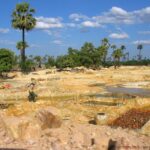
Importance of Environmental Impact Assessment System Myanmar has relied heavily on natural resource exploitation to sustain economic growth, but this has come at the expense of the environment. Environmental governance is low, and Myanmar ranked 138 out of 180 countries in regard to how well the ...
SDG 13 Climate action

SDG 13 is aimed at taking urgent action to combat climate change impacts by developing the capacity of each country to mitigate climate risks and work towards adaptation. Least developed nations, landlocked countries and small island states are recognised as especially in need of support ...






